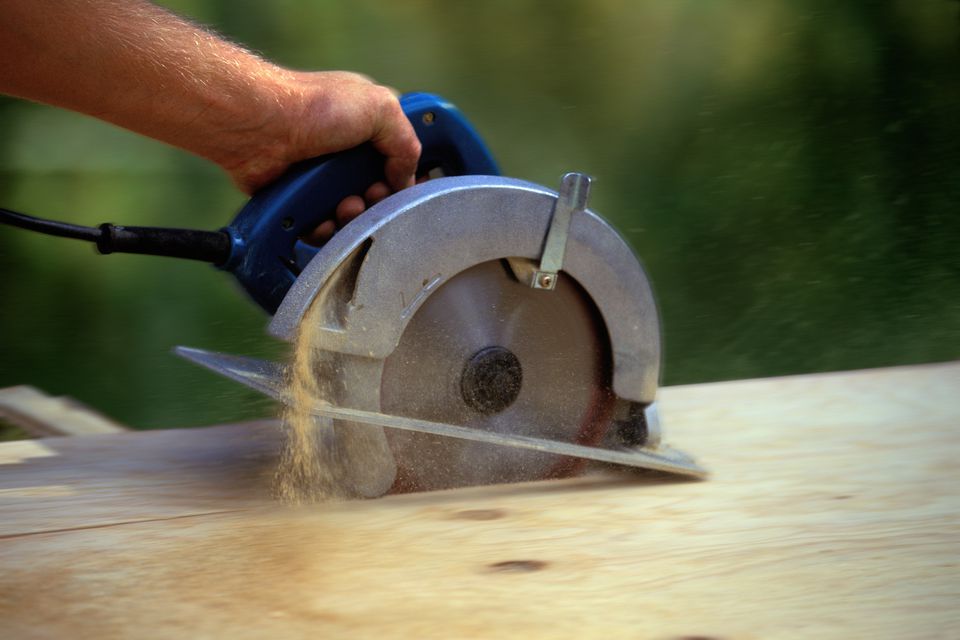Cutting at specific angles are not hard. It is an entirely different case with the circular saw. However, I do have to emphasize that there are people who feel the opposite.
If you are not one of those, then I am sure you are also having some difficulties with the circular saw.
That’s why I have decided to write this article for folks who would like to find out more ways to make better angle cuts with a circular saw.
Without further ado, let’s begin. That is, if you are making the cut with a miter saw or other regular saws.
How To Make Better Angle Cuts With A Circular Saw?
Different wood carpenters would have different preferences for making the perfect angle cuts but the common goal is to accomplish a clean corner cut.
To do so, the bevel cuts you perform have to be as perfectly square and straight as possible. Such a thing is easier said than done, especially if you are using essentially any saw but the circular saw.
In most cases, using a carpentry guiding tool would help a lot but you still need to be aware of some little details.
Otherwise, the end-product would have sloppy and wavy cuts.
Clean angle cuts
Most carpentry boards these days would require a clean and neat cut in order for the final products to look great.
As mentioned, using a guiding tool would be helpful as it ensures you are cutting the board at the right angle.
The most commonly used guiding tool would be the protractor-looking one that you typically find in any carpentry shop.
Step 1
Place the base about 7.5 cm into the board after you have adjusted the depth, draw the guiding line, and unplug the saw.
Afterward, lock the lever for depth adjustment by tightening it.
Step 2
Align the blade with the drawn guiding line and push the Speed Square.
Step 3
Keep a firm grip on the saw and the make the cut.
Step 4
Only complete the cutting process and loosen your grip after the cut has been cleared. Generally, your cuts are guaranteed to be perfect as long as the cutting line and the saw blade are lined up perfectly.
Though, you might have to exert a little bit more pressure at the beginning in order to get through the blade guard’s resistance.
One more thing, remember to keep the saw’s bottom sticking to the guide during the whole process.
Rough cuts
There are instances when the end products do not need to be good-looking and elegant because they are not going to be displayed.
Rough cuts will be used in such cases as it would take too much time to unnecessarily ensure things are pretty.
Regardless, the cuts still need to be as accurate as possible because these boards are usually used as a frame.
As such, structural integrity is quite crucial. Most of the steps would be similar to making a clean cut with some differences as below.
The secret to ensure the accuracy of the cut is position the blade parallel with the guiding line drawn on the board.
After that, adjust the bevel of the saw accordingly and cut along the line as usual. Again, you should place the saw base’s plate with the drawing line and perform the cut.
Though, most saws these days would have some sort of features or mechanism to assist with freehand cuts. The most commonly seen ones are the notches or the mark on the base plate.
That’s why I have been repeatedly emphasizing on aligning the base plate with the guiding line drawn on the board.
Beveled cuts – 45 degrees
Contrary to rough cuts, there will be a situation when you might want to create smaller pieces of wood specifically to visually please the audience.
However, doing so with a circular saw might be a bit challenging. To perform 45 degree cut with a circular saw you need to adjust the angled beveled accordingly.
You would need to lift the base plate and move the circular saw accordingly (with the 45 degree guiding line). The thing is that, the base plate might stick to the board if a hand is not there to hold the board.
There are two possible solutions. The first one is to simply grow another hand to hold the board. Alternatively, if that’s too difficult, you can choose to clamp the board by nailing it to the sawhorses.
Just keep in mind that the nail should be positioned somewhere safely to avoid coming into contact with the saw blade.
Beveled cuts – 60 degrees
It is slightly tricky to perform a 60 degrees cut with a circular saw. Adjust the bevel of the saw to perform a 30 degree cut first.
Next, perform the 30 degrees cut in the opposite direction of the 60 degree cut. Afterward, set the bevel back to default to perform a 90 degree cut.
Perform the cut along the edge of the 30 degree cut we just did. Once that is done, the board should be left with a 60 degree angle.
Read more: How Deep Can You Cut With A Circular Saw?
Important safety tips
In my perspective, the circular is one of the most convenient saw type but at the same time the most dangerous out there.
Things can go south really quickly and once it does you can hardly react to it. Under no circumstances should you bind the saw blade during the cut. The reason is that the blade will get off and rush backwards at you.
The mentioned accident most commonly occurs when the person is splitting a long wooden board, plank or plywood without proper procedure and safety measures.
There are many ways to prevent such an accident from happening but the most common practice is to ensure that cut-off parts of the board can fall off easily.
Read more: How To Prevent Kickback On Circular Saw?
Bottom Line
The circular saw is an extremely powerful tool once you have gotten a hang on cutting into wooden board at certain angles with it.
It is more difficult for sure but the cuts are usually cleaner and more aesthetically pleasing than using the traditional saw.
The above-mentioned information should have adequately provided enough information for any beginner woodworker.
Though if you are completely new and require a more detailed guide on it, let me know in the comment section and I will see what I can do.
Further Reading:
https://www.familyhandyman.com/project/circular-saw-tips-and-techniques/


